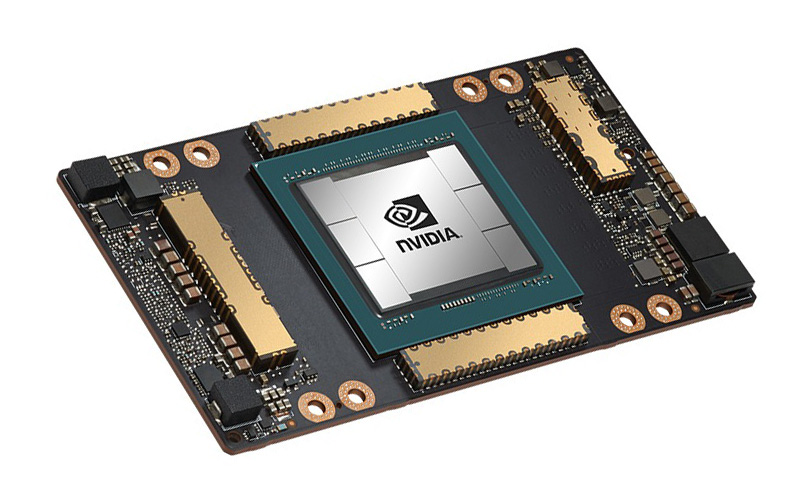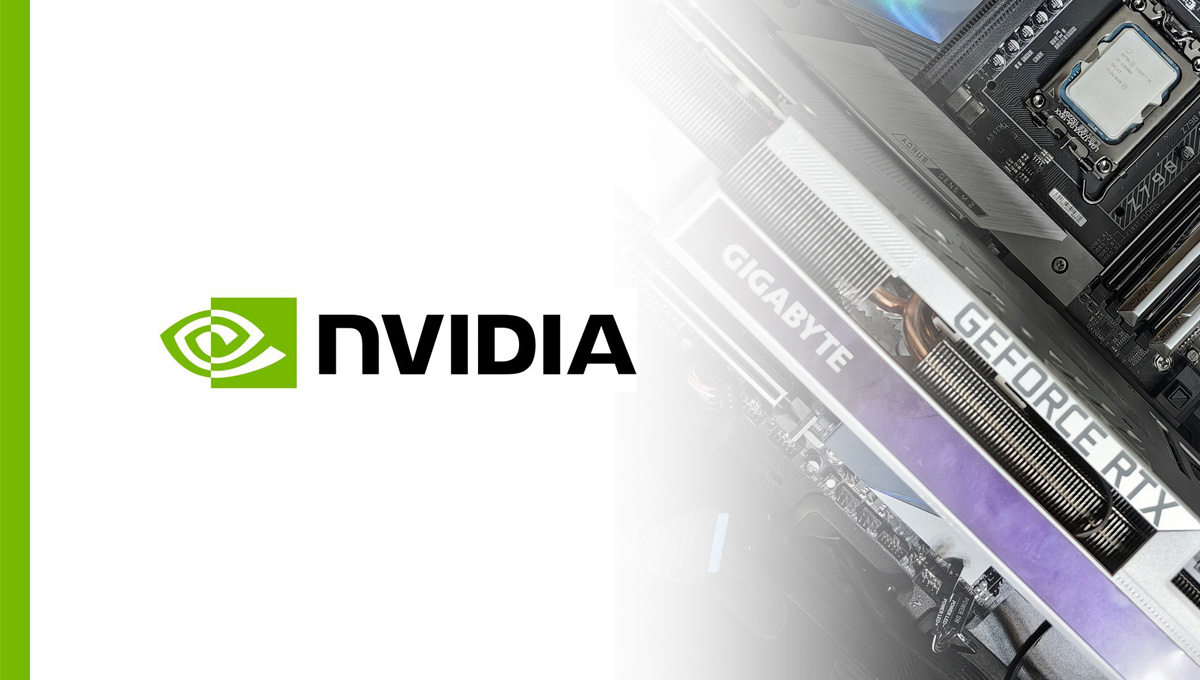Nvidia is revolutionizing the tech industry through its strategic vision that focuses on driving growth and innovation across multiple sectors. From pioneering advances in graphics processing units (GPUs) to pushing the boundaries of artificial intelligence (AI), Nvidia’s strategic roadmap offers valuable insights into the future of technology.
Key Takeaways on Nvidia’s Strategic Vision
- Innovative Leadership: Nvidia leads in GPU and AI technologies, maintaining a strong brand and pushing industry benchmarks.
- Diversified Portfolio: Nvidia’s products span gaming, data centers, automotive, healthcare, and 5G, reducing reliance on a single market.
- Strong Ecosystem: Platforms like CUDA and collaborations with developers drive software and hardware integration.
- Strategic Partnerships: Collaborations with tech giants, startups, and industry-specific sectors fuel growth and technological advancements.
- R&D Focus: Significant investment in research fosters innovation in AI, quantum computing, and sustainability efforts.
- Market Challenges: Nvidia faces competition, supply chain constraints, regulatory scrutiny, and geopolitical risks, impacting its strategies.
- Future Outlook: Nvidia is poised to capitalize on AI, VR/AR, edge computing, and 5G, aligning with emerging technology trends.
Nvidia’s Market Position: A Pioneer in Technology
Nvidia [NVDA] has established itself as a premier player in the tech landscape, with a strong foothold in GPUs and AI. Understanding Nvidia’s market position helps explain the rationale behind its strategic moves and its impact on various technology sectors.
Strengths of Nvidia
Nvidia’s position in the market is bolstered by a set of compelling strengths that underpin its competitive edge:
- Innovative Technology: Originally developed for gaming, Nvidia now leads the AI chips industry with its GPU technology, setting benchmarks for performance and efficiency. Its GPUs are widely used in gaming, professional visualization, and AI applications, driving advancements across tech sectors.
- Diverse Product Portfolio: Nvidia’s product range extends beyond gaming GPUs to include AI, data centers, automotive solutions, and healthcare applications. This diversification allows Nvidia to tap into various markets and sectors, reducing its reliance on any single industry.
- Strong Brand Recognition: Known for high-quality, high-performance products, Nvidia enjoys a strong brand reputation. Its continued innovation in areas like real-time ray tracing and AI-enhanced graphics strengthens customer loyalty and attracts new markets.
- Robust Ecosystem: Platforms like CUDA (Compute Unified Device Architecture) and NVIDIA Studio foster a developer-friendly environment. This ecosystem not only enhances user experience but also encourages developer engagement, driving innovation across software and hardware integrations.
- Talented Workforce: Nvidia’s team comprises skilled engineers, researchers, and industry veterans who drive its innovation agenda. This talent pool is critical for maintaining the company’s competitive edge and pushing technological boundaries.
Recognizing these strengths provides investors and consumers with a clearer understanding of Nvidia’s value proposition and strategic direction.
Market Challenges
Despite its strengths, Nvidia faces several challenges that could impact its market position and growth trajectory:
- Intense Competition: Nvidia faces stiff competition from companies like AMD and Intel, which are also innovating in GPU technology and AI. This competitive pressure requires Nvidia to continually innovate to retain its leadership position.
- Supply Chain Constraints: The global semiconductor shortage in 2023 has affected Nvidia’s production capabilities, potentially delaying product launches and impacting revenue streams. The situation is better now, but the demand for Nvidia’s chips is still exceeding supply.
- Regulatory Scrutiny: Nvidia’s attempts to expand through acquisitions, such as the proposed takeover of ARM, have faced regulatory hurdles. The US Government and others are increasingly scrutinizing tech companies for antitrust concerns, which could impede Nvidia’s strategic growth plans.
- Technological Obsolescence: The rapid pace of technological change means Nvidia must consistently innovate. Failure to do so could lead to product obsolescence, threatening its market share in areas like AI and gaming.
- Geopolitical Factors: International tensions, tariffs, and trade restrictions on semiconductor exports can disrupt Nvidia’s supply chain and increase operational costs, adding complexity to its market dynamics.
Understanding these challenges helps stakeholders make informed decisions and adapt to the volatile tech market.
Strategic Vision: Focus on Growth and Innovation
Nvidia’s strategic vision is rooted in growth through innovation, focusing on various avenues to secure its place at the forefront of technological advancements.
Investment in Research and Development
A core part of Nvidia’s strategy is its significant investment in research and development (R&D) to maintain its competitive advantages and explore new technological frontiers.
- New Product Development: Nvidia’s focus on iterative improvements and expansion of its product offerings keeps it at the cutting edge of technological progress, particularly in GPUs and AI chips, and data centers.
- AI Research: Nvidia invests heavily in research, particularly in AI with deep learning and neural networks. These investments have enabled breakthroughs in machine learning, computer vision, and natural language processing, influencing numerous sectors from healthcare to autonomous vehicles.
- Collaboration with Academia: Partnerships with leading universities and research institutes foster innovation, providing a platform for talent development and fresh ideas. Such collaborations are crucial for staying ahead in emerging fields like quantum computing and AI ethics.
- Open-Source Initiatives: Nvidia’s engagement with the developer community through open-source platforms encourages broader adoption and innovation, allowing developers to build upon Nvidia’s technology.
- Focus on Sustainability: Nvidia integrates sustainability into its R&D efforts, working on energy-efficient technologies to address environmental concerns and meet global climate goals.
Nvidia’s commitment to R&D not only fuels its own growth but also influences entire tech sectors, providing investors with insights into future market trends.

Diversification of Business Segments
Nvidia’s diversification strategy extends its influence across various industries, reducing risk and creating new revenue streams.
- Gaming: As a leader in gaming GPUs, Nvidia continues to push the envelope with technologies like ray tracing and AI-enhanced graphics, creating more immersive experiences for gamers.
- Data Centers: Nvidia’s GPUs power data centers, offering solutions for cloud computing, AI workloads, and enterprise applications. The NVIDIA A100 Tensor Core GPUs exemplify the company’s commitment to providing powerful data processing capabilities.
- Automotive Technologies: Nvidia’s automotive solutions focus on autonomous driving, leveraging its GPUs to process real-time data from sensors and cameras, positioning Nvidia as a key player in the future of smart vehicles.
- Healthcare Applications: Nvidia applies AI to healthcare, aiding in medical diagnostics, treatment planning, and drug discovery. Its AI-powered Clara platform enables healthcare professionals to leverage advanced computing for improved patient outcomes.
- Telecommunications and 5G: Nvidia is exploring AI in optimizing network operations, enhancing data transmission efficiencies, and supporting the rollout of 5G technologies, further broadening its market reach.
By understanding Nvidia’s diversified business segments, investors can better grasp its revenue generation potential and market resilience.
Strategic Partnerships and Collaborations
Nvidia strengthens its market position through strategic alliances across various sectors, which drives innovation and extends its market reach.
Key Collaborations
Nvidia collaborates with a wide range of organizations to foster growth and technology adoption:
- Partnerships with Tech Giants: Collaborations with companies like Microsoft and Google (Alphabet) enhance Nvidia’s AI and cloud solutions, helping it capture a broader market share in cloud computing and enterprise applications.
- Academic Alliances: Nvidia partners with top universities to promote research and development, contributing to advancements in AI, machine learning, and computer science while also nurturing a pipeline of talent and new ideas.
- Industry-Specific Partnerships: By engaging with automotive, healthcare, and other industry sectors, Nvidia develops tailored solutions that meet specific market needs, enhancing its presence in diverse industries.
- Start-Ups and Innovators: Collaborations with emerging tech companies provide Nvidia with insights into new trends and technologies, driving rapid innovation and adaptability.
- Government and Institutions: Partnerships with government bodies and research institutions open up opportunities for Nvidia in national and global technology initiatives, further extending its market influence.
Benefits of Collaborations
Nvidia’s collaborative approach brings numerous benefits:
- Enhanced Product Offerings: Collaborative efforts lead to the development of integrated technologies, resulting in superior products that drive revenue and customer satisfaction.
- Market Expansion: Strategic partnerships allow Nvidia to penetrate new markets and segments, unlocking further growth opportunities.
- Shared Knowledge: By pooling expertise, Nvidia accelerates innovation cycles, overcoming complex technological challenges more efficiently.
- Cost Reductions: Joint investments in research and development reduce the financial burden, improving Nvidia’s profitability margins.
- Risk Management: Collaborative endeavors spread risk across partners, providing a buffer against market volatility and unforeseen disruptions.
Monitoring Nvidia’s partnerships helps investors and businesses gauge the company’s potential for future innovation and growth.
Future Outlook: Predictions and Possibilities
Nvidia’s strategic vision and ongoing investments set the stage for significant future growth and technological advancements.
Emerging Technologies
Nvidia is well-positioned to capitalize on emerging technological trends:
- AI and Machine Learning: Nvidia leads the AI revolution with its GPUs and software platforms, impacting various sectors from healthcare to autonomous vehicles.
- Virtual and Augmented Reality (VR/AR): As the VR and AR (together defined as Extended Reality – XR) markets grow, Nvidia’s powerful GPUs will play a pivotal role in delivering immersive experiences for gaming, education, and enterprise applications.
- Edge Computing: With the rise of connected devices, Nvidia’s advancements in edge computing will enable high-speed processing at the source, reducing latency and improving data handling for IoT applications.
- Quantum Computing: Nvidia’s involvement in quantum computing research aims to revolutionize processing power, solidifying its position as an innovator in future computational paradigms.
- 5G Technology: Nvidia’s AI and data processing capabilities align with the deployment of 5G, providing opportunities for real-time data applications and improved network operations.
Staying informed about these trends helps stakeholders leverage new opportunities in the evolving tech landscape.
Market Positioning
Nvidia’s global market positioning and its future development will be influenced by its strategic initiatives:
- Global Expansion: Nvidia aims to increase its international presence, tapping into regional markets to diversify revenue streams.
- Sustainability Initiatives: By focusing on environmentally friendly practices, Nvidia enhances its brand reputation and aligns with changing consumer preferences.
- Continued Innovation: Nvidia’s ongoing investment in R&D fosters a culture of innovation, keeping the company relevant in the fast-paced tech world.
- Resilience and Adaptability: By enhancing operational flexibility, Nvidia can quickly respond to market disturbances, whether from competition or supply chain disruptions.
- Employee Engagement: Nvidia’s focus on a strong workplace culture attracts and retains top talent, driving sustained competitive advantage and innovation.
Awareness of these factors enables investors and businesses to align their strategies with Nvidia’s growth trajectory.
Synthesizing insights from Nvidia’s strategic vision helps stakeholders make informed decisions in line with evolving technology trends. With its dynamic approach to partnerships, diversified market segments, and focus on emerging technologies, Nvidia is well-positioned for future growth. Staying engaged with Nvidia’s strategy is essential for those looking to navigate the changing landscape of technology.






![Top 1200 UK Companies [FTSE All-Share + FTSE AIM All-Share] – Excel Download](http://store.disfold.com/wp-content/uploads/sites/11/2024/05/top-1200-uk-companies-ftseallshare-aimallshare-small.jpg)
![Top 500 Australian Companies [All Ordinaries] – Excel Download](http://store.disfold.com/wp-content/uploads/sites/11/2021/04/top-500-australian-companies-allordinaries-small.jpg)